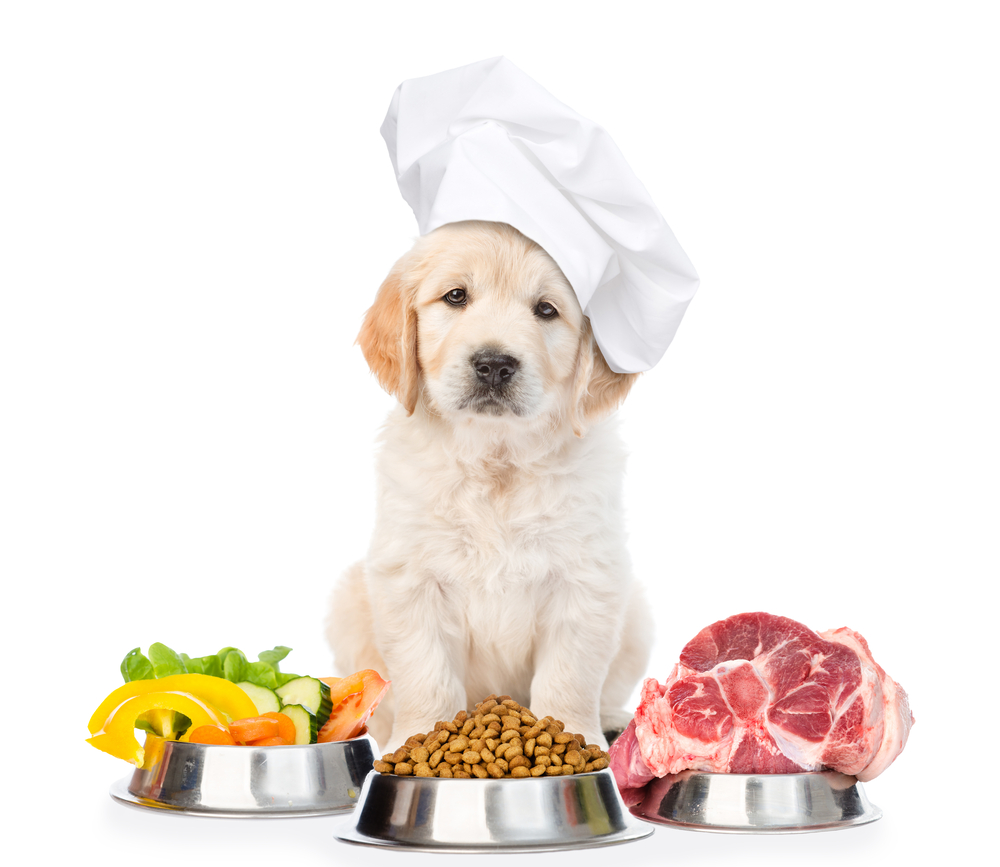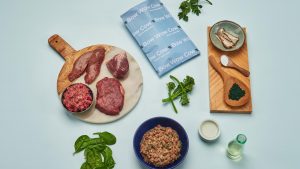Welcoming a new puppy into the family is one of the most exciting, chaotic, and fun experiences you can have. Even if they’ve only been in your life for a few weeks (or even days), you probably already can’t imagine life without them. And as with all of your loved ones, it’s only natural to want the very best for your four-legged friend. Of course, that includes the best puppy food. But what is the best food for your pup?
Just like us humans, dogs’ nutritional requirements change with age. Though the puppy stage isn’t the longest, it’s essential to get their diet right during this key period of growth development.
So, without further ado, here’s everything you need to know to pick the best puppy food for your pooch.
What to look for in the best puppy food
When browsing for dog food, you’ll notice that there are almost countless different types depending on your pup’s age, weight, breed, lifestyle and health concerns. Then there are pet food products that claim to cater to all ages and sizes. But which should you go for?
The most important things to consider when buying puppy food is quality and nutritional makeup. The best indicator of both is an AAFCO (Association of American Feed Control Officials) statement somewhere on the label. Though created in the US, AAFCO standards have been adopted by many countries, including Australia.
AAFCO standards make it easier for Dog Owners to identify what food is right for their pup. Pet food brands will assess the ingredients of their product against AAFCO’s strict guidelines for one of two life stages. These include “adult maintenance”, which describes food for adult dogs, and “growth and reproduction”, which is food designed for puppies and lactating females. For food marketed to “all life stages”, this usually means it follows the stricter “growth and reproduction” standards but can be consumed at any age. For puppies, you’re looking for food that contains a minimum of 22.5% protein and 8.5% fat.
Wet vs dry puppy food
Kibble vs canned food – it’s the age-old debate among Dog Owners everywhere. For adult dogs, it’s mostly a matter of preference. For puppies, a mixture of both is fine, but for puppies, dry food should make up the majority of their diet.
Not only is dry food more economical, but it usually packs the same nutrient punch as wet food, is better for dental hygiene, and is less messy. Look for a high-quality kibble with a high protein content and, if possible, lots of dog-friendly superfoods like dark leafy greens, sweet potato, and tumeric.
That’s not to say your puppy can’t eat wet food – they absolutely can! The best puppy food is one that’s good for their health and their taste buds. Just make sure you stick to products that are formulated for “growth and reproduction” or “all life stages”.
What about treats?
Ahh treats. How would we train our puppies without them? Though they’re important (and delicious) training tools, as the name suggests, they should be given in moderation. That’s because the same AAFCO guidelines that apply to standard dog food don’t apply to treats. As such, most treats are not (and cannot claim to be) nutritionally complete and balanced. Instead, you’ll often find a label claiming the treats are designed for “intermittent or supplemental feeding only”. Ideally, treats should make up no more than 5% of your pup’s daily calorie intake.
If you’re looking for the best puppy treats, try to stick to those that contain as few ingredients as possible. Look for all-natural dried meat products, bones, and cartilage. Not only are they reasonably healthy for your pup, they’re also good for their teeth – and for keeping them busy! Our favourite healthy dog treats are from Waggly– with their wide variety of choice, your pup will be sure to love it.
How often and how much should I feed my puppy?
Puppies go through a lot of growth in their first few months of life. As such, they need lots of calories to support that growth. In fact, puppies need about twice as much food per kilo as adult dogs of the same breed. As for exactly how much that is, it depends on the age and breed of your pup. Generally, the label on your chosen dog food should outline the correct serving size per day.
As for how often you should feed them, there are a few different schools of thought, but the main consideration is what fits into your schedule. Many believe it’s better for puppies to eat small amounts more often (e.g. three to five times a day) because their small stomachs fill easily. However, if you can only manage two a day, don’t worry – your puppy will adapt.
How do I know if I’ve chosen the best puppy food?
So, you think you’ve found the best puppy food for your furry friend. But how can you know for sure? There are a few simple ways to tell if the food you’ve chosen is right or not. Namely, by monitoring your pooch’s coat, energy levels, and their poop (sorry, it’s gross but necessary).
After about a month on your chosen puppy food, give your furbaby a once-over. Their coat should be thick, shiny, and healthy-looking, and they should be just as energetic as you’d expect a puppy to be. Their stools should be reasonably solid and brown, as this indicates they’re properly absorbing all the beneficial minerals and nutrients in their food.
When should I transition my puppy to adult food?
Once your four-legged family member has reached about 90% of their expected adult weight (usually 9-12 months for small breeds and 12-18 months for large breeds) their diet can start to change. You can start feeding them food that is formulated for “adult maintenance”, or if they’re already eating something for “all life stages”, simply adjust the quantity.
If you do decide to transition to a new food, or perhaps shift to BARF (a.k.a. raw) dog food, feel free to take your time introducing it to your pup. Remember, you can always start with adding small amounts of the new food to the old.


